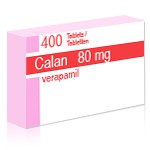Stable Angina: A Comprehensive Guide


Stable angina, also known as angina pectoris, is a common cardiovascular condition characterized by chest pain or discomfort that occurs due to inadequate blood supply to the heart muscle. It is a symptom of underlying coronary artery disease (CAD) and typically arises during physical exertion or emotional stress. Unlike unstable angina, stable angina follows a predictable pattern and can be managed with lifestyle changes, medications, and medical interventions. Understanding the mechanism, classification, diagnosis, and treatment of stable angina is essential for proper management and improving patients' quality of life.
Understanding Stable Angina
Stable angina is caused by the narrowing of coronary arteries due to atherosclerosis, which restricts blood flow to the myocardium. This condition results in a mismatch between the oxygen demand of the heart and the oxygen supply delivered through the coronary arteries. The pain or discomfort associated with stable angina is often described as a pressure or squeezing sensation in the chest, which may radiate to the shoulders, arms, neck, jaw, or back. The symptoms are typically triggered by exertion, such as walking uphill or climbing stairs, and subside with rest or the administration of nitroglycerin.
Mechanism of Action of Stable Angina
The underlying mechanism of stable angina is closely linked to the physiology of coronary artery function and myocardial oxygen demand. When the coronary arteries become narrowed due to atherosclerotic plaque buildup, blood flow to the heart is reduced. Under normal conditions, the coronary arteries can dilate to meet increased oxygen demand, but in individuals with stable angina, this compensatory mechanism is impaired. As a result, during exertion or stress, the oxygen supply to the myocardium becomes insufficient, leading to ischemia and chest discomfort. Once the triggering factor is removed, the oxygen balance is restored, and symptoms resolve.
The pathophysiology of stable angina also involves endothelial dysfunction, inflammation, and vascular stiffness, which further contribute to reduced coronary blood flow. Additionally, an imbalance in autonomic regulation and coronary microvascular dysfunction can exacerbate ischemic episodes in certain individuals.
Types of Angina
Angina is classified into three major types: stable angina, unstable angina, and variant (Prinzmetal’s) angina. Each type differs in its pathophysiology, triggers, and clinical implications.Stable angina is predictable and occurs in response to physical activity or stress. It is relieved with rest or nitroglycerin and does not usually indicate an imminent heart attack.
Unstable angina is a more severe and unpredictable form of angina that can occur at rest or with minimal exertion. It is considered a medical emergency as it signifies a higher risk of myocardial infarction due to the rupture of an atherosclerotic plaque and subsequent thrombosis.
Variant angina, also known as Prinzmetal’s angina, is caused by transient coronary artery spasm rather than atherosclerosis. It can occur at rest, often during nighttime or early morning hours, and is relieved by calcium channel blockers or nitrates.
Confirming Stable Angina
The diagnosis of stable angina involves a thorough clinical assessment, including a detailed history, physical examination, and diagnostic testing. Patients typically describe their symptoms as exertional chest discomfort relieved by rest, which provides an important diagnostic clue.
Electrocardiography (ECG) is commonly used to evaluate patients with suspected stable angina. While the resting ECG may appear normal in some cases, exercise stress testing can reveal ischemic changes, such as ST-segment depression, during physical exertion.
Coronary angiography is considered the gold standard for diagnosing coronary artery disease and assessing the severity of arterial narrowing. It involves the use of contrast dye and X-ray imaging to visualize coronary arteries and identify obstructions.
Other imaging modalities, such as stress echocardiography, nuclear perfusion imaging, and cardiac MRI, can also provide valuable information on myocardial perfusion and function. These tests help differentiate stable angina from other conditions that may mimic chest pain, such as gastroesophageal reflux disease (GERD) or musculoskeletal disorders.
The Role of Calan in the Treatment of Stable Angina
Calan (verapamil) is a calcium channel blocker (CCB) that plays a significant role in the management of stable angina. It belongs to the non-dihydropyridine class of calcium channel blockers, which exert their effects by inhibiting calcium influx into cardiac and vascular smooth muscle cells. This action results in vasodilation, reduced myocardial oxygen demand, and improved coronary blood flow.
One of the primary benefits of Calan in stable angina treatment is its ability to decrease myocardial contractility and heart rate, which reduces oxygen consumption and alleviates ischemic symptoms. Unlike beta-blockers, which also lower heart rate, Calan does not induce bronchoconstriction, making it a suitable option for patients with respiratory conditions such as asthma or chronic obstructive pulmonary disease (COPD).
Calan is particularly effective in patients with stable angina who also have hypertension or supraventricular arrhythmias, as it helps control blood pressure and regulate heart rhythm. It is often used as monotherapy or in combination with other anti-anginal agents such as nitrates or beta-blockers to achieve optimal symptom relief.
Despite its efficacy, Calan should be used with caution in individuals with heart failure, severe hypotension, or conduction abnormalities, as it can depress cardiac function and exacerbate existing conditions. Common side effects of Calan include dizziness, headache, constipation, and peripheral edema. Patients taking Calan should be monitored for potential drug interactions, particularly with medications that affect liver metabolism, as verapamil is metabolized by the cytochrome P450 system.
Lifestyle Modifications and Additional Treatment Approaches
In addition to pharmacological therapy, lifestyle modifications play a crucial role in the management of stable angina. Patients are encouraged to adopt a heart-healthy diet rich in fruits, vegetables, whole grains, and lean proteins while limiting saturated fats, sodium, and processed foods. Regular physical activity, such as brisk walking or swimming, can improve cardiovascular fitness and enhance endothelial function.
Smoking cessation is essential for individuals with stable angina, as smoking accelerates atherosclerosis and increases the risk of acute coronary events. Stress management techniques, including meditation, yoga, and cognitive-behavioral therapy, can also help reduce angina episodes triggered by emotional stress.
Medical interventions such as percutaneous coronary intervention (PCI) or coronary artery bypass grafting (CABG) may be recommended for patients with severe coronary artery disease who do not respond adequately to medical therapy. PCI involves the placement of a stent to open narrowed arteries, while CABG is a surgical procedure that bypasses blocked arteries using grafts from other blood vessels.
Conclusion
Stable angina is a common manifestation of coronary artery disease that requires a comprehensive approach to diagnosis and management. Understanding its pathophysiology, distinguishing it from other forms of angina, and confirming the diagnosis through appropriate testing are essential steps in providing effective treatment. Calan plays a vital role in alleviating symptoms by improving coronary blood flow and reducing myocardial oxygen demand. Alongside pharmacological therapy, lifestyle modifications and medical interventions contribute to better long-term outcomes for patients with stable angina. By integrating these strategies, individuals can effectively manage their condition and reduce the risk of complications associated with coronary artery disease.
Medically Reviewed by Dr. Mevan Nandaka Wijetunga, MD
(Updated at Mar 26 / 2025)

